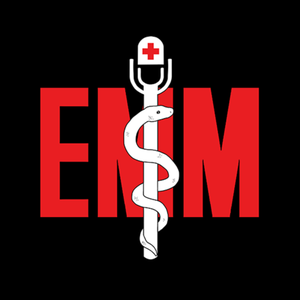
Emergency Medical Minute
medicalminute
- 2 minutes 43 secondsEpisode 901: Underdosing in Status Epilepticus
Contributor: Aaron Lessen MD
Educational Pearls:
-
Lorazepam (Ativan) is dosed at 0.1 mg/kg up to a maximum of 4 mg in status epilepticus
-
Some ED protocols only give 2 mg initially
-
-
The maximum recommended dose of levetiracetam (Keppra) is 60 mg/kg or 4.5 g
-
In one retrospective study, only 50% of patients received the correct dose of lorazepam
-
For levetiracetam, it was only 35% of patients
-
-
Underdosing leads to complications
-
Higher rates of intubations
-
More likely to progress to refractory status epilepticus
-
References
1. Cetnarowski A, Cunningham B, Mullen C, Fowler M. Evaluation of intravenous lorazepam dosing strategies and the incidence of refractory status epilepticus. Epilepsy Res. 2023;190(November 2022):107067. doi:10.1016/j.eplepsyres.2022.107067
2. Sathe AG, Tillman H, Coles LD, et al. Underdosing of Benzodiazepines in Patients With Status Epilepticus Enrolled in Established Status Epilepticus Treatment Trial. Acad Emerg Med. 2019;26(8):940-943. doi:10.1111/acem.13811
Summarized by Jorge Chalit, OMSII | Edited by Meg Joyce & Jorge Chalit
29 April 2024, 10:00 am -
- 2 minutes 35 secondsEpisode 900: Ketamine Dosing
Contributor: Travis Barlock MD
Educational Pearls:
Ketamine is an NMDA receptor antagonist with a wide variety of uses in the emergency department. To dose ketamine remember the numbers 0.3, 1, and 3.
Pain dose
-
For acute pain relief administer 0.3 mg/kg of ketamine IV over 10-20 minutes (max of 30 mg).
-
Note: There is evidence that a lower dose of 0.1-0.15 mg/kg can be just as effective.
Dissociative dose
-
To use ketamine as an induction agent for intubation or for procedural sedation administer 1 mg/kg IV over 1-2 minutes.
IM for acute agitation
-
If a patient is out of control and a danger to themselves or others, administer 3 mg/kg intramuscularly (max 500 mg).
-
If you are giving IM ketamine it has to be in the concentrated 100 mg/ml vial.
Additional pearls
-
Pushing ketamine too quickly can cause laryngospasm.
-
Between .3 and 1 mg/kg is known as the recreational dose. You want to avoid this range because this is where ketamine starts to pick up its dissociative effects and can cause unpleasant and intense hallucinations. This is colloquially known as being in the “k-hole”.
References
-
Gao, M., Rejaei, D., & Liu, H. (2016). Ketamine use in current clinical practice. Acta pharmacologica Sinica, 37(7), 865–872. https://doi.org/10.1038/aps.2016.5
-
Lin, J., Figuerado, Y., Montgomery, A., Lee, J., Cannis, M., Norton, V. C., Calvo, R., & Sikand, H. (2021). Efficacy of ketamine for initial control of acute agitation in the emergency department: A randomized study. The American journal of emergency medicine, 44, 306–311. https://doi.org/10.1016/j.ajem.2020.04.013
-
Stirling, J., & McCoy, L. (2010). Quantifying the psychological effects of ketamine: from euphoria to the k-Hole. Substance use & misuse, 45(14), 2428–2443. https://doi.org/10.3109/10826081003793912
Summarized by Jeffrey Olson MS2 | Edited by Jorge Chalit, OMS II
22 April 2024, 10:00 am -
- 3 minutes 51 secondsEpisode 899: Thrombolytic Contraindications
Contributor: Travis Barlock MD
Educational Pearls:
-
Thrombolytic therapy (tPA or TNK) is often used in the ED for strokes
-
Use of anticoagulants with INR > 1.7 or PT >15
-
Warfarin will reliably increase the INR
-
-
Current use of Direct thrombin inhibitor or Factor Xa inhibitor
-
aPTT/PT/INR are insufficient to assess the degree of anticoagulant effect of Factor Xa inhibitors like apixaban (Eliquis) and rivaroxaban (Xarelto)
-
-
Intracranial or intraspinal surgery in the last 3 months
-
Intracranial neoplasms or arteriovenous malformations also increase the risk of bleeding
-
-
Current intracranial or subarachnoid hemorrhage
-
History of intracranial hemorrhage from thrombolytic therapy also contraindicates tPA/TNK
-
-
Recent (within 21 days) or active gastrointestinal bleed
-
Hypertension
-
BP >185 systolic or >110 diastolic
-
Administer labetalol before thrombolytics to lower blood pressure
-
-
Timing of symptoms
-
Onset > 4.5 hours contraindicates tPA
-
-
Platelet count < 100,000
-
BGL < 50
-
Potential alternative explanation for stroke-like symptoms obviating need for thrombolytics
-
References
1. Fugate JE, Rabinstein AA. Absolute and Relative Contraindications to IV rt-PA for Acute Ischemic Stroke. The Neurohospitalist. 2015;5(3):110-121. doi:10.1177/1941874415578532
2. Powers WJ, Rabinstein AA, Ackerson T, et al. Guidelines for the Early Management of Patients with Acute Ischemic Stroke: 2019 Update to the 2018 Guidelines for the Early Management of Acute Ischemic Stroke a Guideline for Healthcare Professionals from the American Heart Association/American Stroke Association. Vol 50.; 2019. doi:10.1161/STR.0000000000000211
Summarized by Jorge Chalit, OMSII | Edited by Jorge Chalit
15 April 2024, 4:09 pm -
- 3 minutes 44 secondsEpisode 898: Takotsubo Cardiomyopathy
Contributor: Ricky Dhaliwal, MD
Educational Pearls:
-
Takotsubo cardiomyopathy, also known as "broken heart syndrome,” is a temporary heart condition that can mimic the symptoms of a heart attack, including troponin elevations and mimic STEMI on ECG.
-
The exact cause is not fully understood, but it is often triggered by severe emotional or physical stress. The stress can lead to a surge of catecholamines which affects the heart (multivessel spasm/paralysed myocardium).
-
The name "Takotsubo" comes from the Japanese term for a type of octopus trap, as the left ventricle takes on a distinctive shape resembling this trap during systole. The LV is dilated and part of the wall becomes akenetic. These changes can be seen on ultrasound.
-
The population most at risk for Takotsubo are post-menopausal women.
-
Coronary angiography is one of the only ways to differentiate Takotsubo from other acute coronary syndromes.
-
Most people with Takotsubo cardiomyopathy recover fully.
References
-
Amin, H. Z., Amin, L. Z., & Pradipta, A. (2020). Takotsubo Cardiomyopathy: A Brief Review. Journal of medicine and life, 13(1), 3–7. https://doi.org/10.25122/jml-2018-0067
-
Bossone, E., Savarese, G., Ferrara, F., Citro, R., Mosca, S., Musella, F., Limongelli, G., Manfredini, R., Cittadini, A., & Perrone Filardi, P. (2013). Takotsubo cardiomyopathy: overview. Heart failure clinics, 9(2), 249–x. https://doi.org/10.1016/j.hfc.2012.12.015
-
Dawson D. K. (2018). Acute stress-induced (takotsubo) cardiomyopathy. Heart (British Cardiac Society), 104(2), 96–102. https://doi.org/10.1136/heartjnl-2017-311579
-
Kida, K., Akashi, Y. J., Fazio, G., & Novo, S. (2010). Takotsubo cardiomyopathy. Current pharmaceutical design, 16(26), 2910–2917. https://doi.org/10.2174/138161210793176509
Summarized by Jeffrey Olson MS2 | Edited by Jorge Chalit, OMSII
10 April 2024, 5:18 am -
- 4 minutes 33 secondsEpisode 897: Adrenal Crisis
Contributor: Ricky Dhaliwal MD
Educational Pearls:
-
Primary adrenal insufficiency (most common risk factor for adrenal crises)
-
An autoimmune condition commonly known as Addison's Disease
-
Defects in the cells of the adrenal glomerulosa and fasciculata result in deficient glucocorticoids and mineralocorticoids
-
Mineralocorticoid deficiency leads to hyponatremia and hypovolemia
-
Lack of aldosterone downregulates Endothelial Sodium Channels (ENaCs) at the renal tubules
-
Water follows sodium and generates a hypovolemic state
-
-
Glucocorticoid deficiency contributes further to hypotension and hyponatremia
-
Decreased vascular responsiveness to angiotensin II
-
Increased secretion of vasopressin (ADH) from the posterior pituitary
-
-
-
An adrenal crisis is defined as a sudden worsening of adrenal insufficiency
-
Presents with non-specific symptoms including nausea, vomiting, fatigue, confusion, and fevers
-
Fevers may be the result of underlying infection
-
-
Work-up in the ED includes labs looking for infection and adding cortisol + ACTH levels
-
Emergent treatment is required
-
100 mg hydrocortisone bolus followed by 50 mg every 6 hours
-
Immediate IV fluid repletion with 1L normal saline
-
-
The most common cause of an adrenal crisis is an acute infection in patients with baseline adrenal insufficiency
-
Often due to a gastrointestinal infection
-
References
1. Bancos I, Hahner S, Tomlinson J, Arlt W. Diagnosis and management of adrenal insufficiency. Lancet Diabetes Endocrinol. 2015;3(3):216-226. doi:10.1016/S2213-8587(14)70142-1
2. Bornstein SR, Allolio B, Arlt W, et al. Diagnosis and Treatment of Primary Adrenal Insufficiency: An Endocrine Society Clinical Practice Guideline. J Clin Endocrinol Metab. 2016;101(2):364-389. doi:10.1210/jc.2015-1710
3. Cronin CC, Callaghan N, Kearney PJ, Murnaghan DJ, Shanahan F. Addison disease in patients treated with glucocorticoid therapy. Arch Intern Med. 1997;157(4):456-458.
4. Feldman RD, Gros R. Vascular effects of aldosterone: sorting out the receptors and the ligands. Clin Exp Pharmacol Physiol. 2013;40(12):916-921. doi:10.1111/1440-1681.12157
5. Hahner S, Loeffler M, Bleicken B, et al. Epidemiology of adrenal crisis in chronic adrenal insufficiency: the need for new prevention strategies. Eur J Endocrinol. 2010;162(3):597-602. doi:10.1530/EJE-09-0884
Summarized by Jorge Chalit, OMSII | Edited by Meg Joyce & Jorge Chalit
1 April 2024, 10:00 am -
- 2 minutes 30 secondsPodcast 896: Cancer-Related Emergencies
Contributor: Travis Barlock, MD
Educational Pearls:
Cancer-related emergencies can be sorted into a few buckets:
-
Infection
-
Cancer itself and the treatments (chemotherapy/radiation) can be immunosuppressive. Look out for conditions such as sepsis and neutropenic fever.
-
-
Obstruction
-
Cancer causes a hypercoagulable state. Look out for blood clots which can cause emergencies such as a pulmonary embolism, stroke, superior vena cava (SVC) syndrome, and cardiac tamponade.
-
-
Metabolic
-
Cancer can affect the metabolic system in a variety of ways. For example, certain cancers like bone cancers can stimulate the bones to release large amounts of calcium leading to hypercalcemia. Tumor lysis syndrome is another consideration in which either spontaneously or due to treatment, tumor cells will release large amounts of electrolytes into the bloodstream causing hyperuricemia, hyperkalemia, hyperphosphatemia, and hypocalcemia.
-
-
Medication side effect
-
Immunomodulators can have strange side effects. A common one to know is Keytruda (pembrolizumab), which can cause inflammation in any organ. So if you have a cancer patient on immunomodulators with any inflammatory changes (cystitis, colitis, pneumonitis, etc), talk to oncology about whether steroids are indicated.
-
Chemotherapy can cause tumor lysis syndrome (see above), and multiple chemotherapeutics are known to cause heart failure (doxorubicin, trastuzumab), kidney failure (cisplatin), and pulmonary toxicity (bleomycin).
-
References
-
Campello, E., Ilich, A., Simioni, P., & Key, N. S. (2019). The relationship between pancreatic cancer and hypercoagulability: a comprehensive review on epidemiological and biological issues. British journal of cancer, 121(5), 359–371. https://doi.org/10.1038/s41416-019-0510-x
-
Gyamfi, J., Kim, J., & Choi, J. (2022). Cancer as a Metabolic Disorder. International journal of molecular sciences, 23(3), 1155. https://doi.org/10.3390/ijms23031155
-
Kwok, G., Yau, T. C., Chiu, J. W., Tse, E., & Kwong, Y. L. (2016). Pembrolizumab (Keytruda). Human vaccines & immunotherapeutics, 12(11), 2777–2789. https://doi.org/10.1080/21645515.2016.1199310
-
Wang, S. J., Dougan, S. K., & Dougan, M. (2023). Immune mechanisms of toxicity from checkpoint inhibitors. Trends in cancer, 9(7), 543–553. https://doi.org/10.1016/j.trecan.2023.04.002
-
Zimmer, A. J., & Freifeld, A. G. (2019). Optimal Management of Neutropenic Fever in Patients With Cancer. Journal of oncology practice, 15(1), 19–24. https://doi.org/10.1200/JOP.18.00269
Summarized by Jeffrey Olson MS2 | Edited by Meg Joyce & Jorge Chalit, OMSII
25 March 2024, 10:00 am -
- 2 minutes 28 secondsEpisode 895: Indications for Exogenous Albumin
Contributor: Travis Barlock MD
Educational Pearls:
-
There are three indications for IV albumin in the ED
-
Spontaneous bacterial peritonitis (SBP)
-
Patients with SBP develop renal failure from volume depletion
-
Albumin repletes volume stores and reduces renal impairment
-
Albumin binds inflammatory cytokines and expands plasma volume
-
Reduced all-cause mortality if IV albumin is given with antibiotics
-
-
Hepatorenal syndrome
-
Cirrhosis of the liver causes the release of endogenous vasodilators
-
The renin-angiotensin-aldosterone system (RAAS) fails systemically but maintains vasoconstriction at the kidneys, leading to decreased renal perfusion
-
IV albumin expands plasma volume and prevents failure of the RAAS
-
-
Large volume paracentesis
-
Large-volume removal may lead to circulatory dysfunction
-
IV albumin is associated with a reduced risk of paracentesis-associated circulatory dysfunction
-
-
There are many other FDA-approved conditions for which to use exogenous albumin but the data are conflicted about the benefits on mortality
References
1. Arroyo V, Fernandez J. Pathophysiological basis of albumin use in cirrhosis. Ann Hepatol. 2011;10(SUPPL. 1):S6-S14. doi:10.1016/s1665-2681(19)31600-x
2. Bai Z, Wang L, Wang R, et al. Use of human albumin infusion in cirrhotic patients: a systematic review and meta-analysis of randomized controlled trials. Hepatol Int. 2022;16(6):1468-1483. doi:10.1007/s12072-022-10374-z
3. Batool S, Waheed MD, Vuthaluru K, et al. Efficacy of Intravenous Albumin for Spontaneous Bacterial Peritonitis Infection Among Patients With Cirrhosis: A Meta-Analysis of Randomized Control Trials. Cureus. 2022;14(12). doi:10.7759/cureus.33124
4. Kwok CS, Krupa L, Mahtani A, et al. Albumin reduces paracentesis-induced circulatory dysfunction and reduces death and renal impairment among patients with cirrhosis and infection: A systematic review and meta-analysis. Biomed Res Int. 2013;2013. doi:10.1155/2013/295153
5. Sort P, Navasa M, Arroyo V, et al. Effect of Intravenous Albumin on Renal Impairment and Mortality in Patients with Cirrhosis and Spontaneous Bacterial Peritonitis. N Engl J Med. 1999;341(6):403-409.
Summarized by Jorge Chalit, OMSII | Edited by Meg Joyce & Jorge Chalit
18 March 2024, 10:00 am -
- 7 minutes 45 secondsEpisode 894: DKA and HHS
Contributor: Ricky Dhaliwal, MD
Educational Pearls:
What are DKA and HHS?
-
DKA (Diabetic Ketoacidosis) and HHS (Hyperosmolar Hyperglycemic State) are both acute hyperglycemic states.
DKA
-
More common in type 1 diabetes.
-
Triggered by decreased circulating insulin.
-
The body needs energy but cannot use glucose because it can’t get it into the cells.
-
This leads to increased metabolism of free fatty acids and the increased production of ketones.
-
The buildup of ketones causes acidosis.
-
The kidneys attempt to compensate for the acidosis by increasing diuresis.
-
-
These patients present as dry and altered, with sweet-smelling breath and Kussmaul (fast and deep) respirations.
HSS
-
More common in type 2 diabetes.
-
In this condition there is still enough circulating insulin to avoid the breakdown of fats for energy but not enough insulin to prevent hyperglycemia.
-
Serum glucose levels are very high – around 600 to 1200 mg/dl.
-
Also presents similarly to DKA with the patient being dry and altered.
Important labs to monitor
-
Serum glucose
-
Potassium
-
Phosphorus
-
Magnesium
-
Anion gap (Na - Cl - HCO3)
-
Renal function (Creatinine and BUN)
-
ABG/VBG for pH
-
Urinalysis and urine ketones by dipstick
Treatment
-
Identify the cause, i.e. Has the patient stopped taking their insulin?
-
Aggressive hydration with isotonic fluids.
-
Normal Saline (NS) vs Lactated Ringers (LR)?
-
LR might resolve the DKA/HHS faster with less risk of hypernatremia.
-
-
-
Should you bolus with insulin?
-
No, just start a drip.
-
0.1-0.14 units per kg of insulin.
-
-
Make sure you have your potassium back before starting insulin as the insulin can shift the potassium into the cells and lead to dangerous hypokalemia.
-
Should you treat hyponatremia?
-
Make sure to correct for hyperglycemia before treating. This artificially depresses the sodium.
-
-
Should you give bicarb?
-
Replace if the pH < 6.9. Otherwise, it won’t do anything to help.
-
-
Don’t intubate, if the patient is breathing fast it is because they are compensating for their acidosis.
References
-
Andrade-Castellanos, C. A., Colunga-Lozano, L. E., Delgado-Figueroa, N., & Gonzalez-Padilla, D. A. (2016). Subcutaneous rapid-acting insulin analogues for diabetic ketoacidosis. The Cochrane database of systematic reviews, 2016(1), CD011281. https://doi.org/10.1002/14651858.CD011281.pub2
-
Chaithongdi, N., Subauste, J. S., Koch, C. A., & Geraci, S. A. (2011). Diagnosis and management of hyperglycemic emergencies. Hormones (Athens, Greece), 10(4), 250–260. https://doi.org/10.14310/horm.2002.1316
-
Dhatariya, K. K., Glaser, N. S., Codner, E., & Umpierrez, G. E. (2020). Diabetic ketoacidosis. Nature reviews. Disease primers, 6(1), 40. https://doi.org/10.1038/s41572-020-0165-1
-
Duhon, B., Attridge, R. L., Franco-Martinez, A. C., Maxwell, P. R., & Hughes, D. W. (2013). Intravenous sodium bicarbonate therapy in severely acidotic diabetic ketoacidosis. The Annals of pharmacotherapy, 47(7-8), 970–975. https://doi.org/10.1345/aph.1S014
-
Modi, A., Agrawal, A., & Morgan, F. (2017). Euglycemic Diabetic Ketoacidosis: A Review. Current diabetes reviews, 13(3), 315–321. https://doi.org/10.2174/1573399812666160421121307
-
Self, W. H., Evans, C. S., Jenkins, C. A., Brown, R. M., Casey, J. D., Collins, S. P., Coston, T. D., Felbinger, M., Flemmons, L. N., Hellervik, S. M., Lindsell, C. J., Liu, D., McCoin, N. S., Niswender, K. D., Slovis, C. M., Stollings, J. L., Wang, L., Rice, T. W., Semler, M. W., & Pragmatic Critical Care Research Group (2020). Clinical Effects of Balanced Crystalloids vs Saline in Adults With Diabetic Ketoacidosis: A Subgroup Analysis of Cluster Randomized Clinical Trials. JAMA network open, 3(11), e2024596. https://doi.org/10.1001/jamanetworkopen.2020.24596
Summarized by Jeffrey Olson MS2 | Edited by Meg Joyce & Jorge Chalit, OMSII
11 March 2024, 10:00 am -
- 2 minutes 34 secondsEpisode 893: Home Treatments for Button Battery Ingestion
Contributor: Aaron Lessen MD
Educational Pearls:
-
Button batteries cause alkaline corrosion and erosion of the esophagus when swallowed
-
Children swallow button batteries, which create a medical emergency as they can perforate the esophagus
-
A recent study compared various home remedies as first-aid therapy for button battery ingestion
-
Honey, jam, normal saline, Coca-Cola, orange juice, milk, and yogurt
-
-
The study used a porcine esophageal model to assess resistance to alkalinization with the different home remedies
-
Honey and jam demonstrated a significantly lower esophageal tissue pH compared with normal saline
-
Histologic changes in the tissue samples appeared 60 minutes later with honey and jam compared with normal saline
-
These treatments do not preclude medical intervention and battery removal
References
1. Chiew AL, Lin CS, Nguyen DT, Sinclair FAW, Chan BS, Solinas A. Home Therapies to Neutralize Button Battery Injury in a Porcine Esophageal Model. Ann Emerg Med. 2023:1-9. doi:10.1016/j.annemergmed.2023.08.018
Summarized by Jorge Chalit, OMSII | Edited by Meg Joyce & Jorge Chalit
4 March 2024, 11:00 am -
- 5 minutes 7 secondsEpisode 892: Tourniquets
Contributor: Ricky Dhaliwal, MD
Educational Pearls:
What can you do to control bleeding in a penetrating wound?
-
Apply direct pinpoint pressure on the wound as well as proximal to the wound.
-
Build a compression dressing.
How do you build a compression dressing?
-
Think about building an upside-down pyramid with the gauze.
-
Consider coagulation agents such as an absorbent gelatin sponge material, microporous polysaccharide hemispheres, oxidized cellulose, fibrin sealants, topical thrombin, or tranexamic acid.
What are the indications to use a tourniquet?
-
The Stop The Bleed campaign recommends looking for the following features of “life-threatening” bleeding.
-
Pulsatile bleeding.
-
Blood is pooling on the ground.
-
The overlying clothes are soaked.
-
Bandages are ineffective.
-
Partial or full amputation.
-
And if the patient is in shock.
How do you put on a tourniquet?
-
If using a Combat Application Tourniquet (C-A-T) tourniquet, apply it proximal to the wound, then rotate the plastic rod until the bleeding stops. Then secure the plastic rod with a clip and make sure the Velcro is in place.
-
Mark the time - generally, there is a spot on the tourniquet to write.
-
Have a plan for the next steps. Does the patient need emergent surgery? Do they need to be transfered?
How long can you leave a tourniquet on?
-
Less than 90 minutes.
What are the risks?
-
Nerve injury.
-
Ischemia.
References
-
Latina R, Iacorossi L, Fauci AJ, Biffi A, Castellini G, Coclite D, D'Angelo D, Gianola S, Mari V, Napoletano A, Porcu G, Ruggeri M, Iannone P, Chiara O, On Behalf Of Inih-Major Trauma. Effectiveness of Pre-Hospital Tourniquet in Emergency Patients with Major Trauma and Uncontrolled Haemorrhage: A Systematic Review and Meta-Analysis. Int J Environ Res Public Health. 2021 Dec 6;18(23):12861. doi: 10.3390/ijerph182312861. PMID: 34886586; PMCID: PMC8657739.
-
Martinson J, Park H, Butler FK Jr, Hammesfahr R, DuBose JJ, Scalea TM. Tourniquets USA: A Review of the Current Literature for Commercially Available Alternative Tourniquets for Use in the Prehospital Civilian Environment. J Spec Oper Med. 2020 Summer;20(2):116-122. doi: 10.55460/CT9D-TMZE. PMID: 32573747.
-
Resources poster booklet. (n.d.). Stop the Bleed. https://www.stopthebleed.org/resources-poster-booklet/
Summarized by Jeffrey Olson MS2 | Edited by Meg Joyce & Jorge Chalit, OMSII
27 February 2024, 5:45 am -
- 43 minutes 28 secondsPharmacy Phriday #11: Riddles, Medical Jargon, NNT, and Time Travel
Contributors: Kali Olson PharmD, Travis Barlock MD, Jeffrey Olson MS2
Summary:
In this episode of Pharmacy Phriday, Dr. Kali Olson joins Dr. Travis Barlock and Jeffrey Olson in studio to discuss a variety of interesting topics in the form of a segment show. Dr. Kali Olson earned her Doctorate of Pharmacy from the University of Colorado, Skaggs School of Pharmacy and completed a PGY1 residency at Detroit Receiving Hospital and a PGY2 residency in Emergency Medicine at Denver Health. She now works as an Emergency Medicine Pharmacist at Denver Health.
In segment one of the show, Kali and Travis answer the Get-To-Know-You questionnaire. In segment two, they work together to answer a series of pharmacy-based riddles. In segment three they play a “Balderdash” like game in which they guess the definitions of medical jargon. In segment four they play the Number Needed to Treat game, invented by the AFP podcast. And in segment five they work together to answer a question about a far-out scenario involving medications and time travel!
References
· American Family Physician Podcast, https://www.aafp.org/pubs/afp/multimedia/podcast.html
· Gragnolati, A. (2022, May 5). The Yuzpe method of emergency contraception. GoodRx. https://www.goodrx.com/conditions/emergency-contraceptive/yuzpe-method
· Manikandan S, Vani NI. Holiday reading: Learning medicine through riddles. CMAJ. 2010 Dec 14;182(18):E863-4. doi: 10.1503/cmaj.100466. PMID: 21149530; PMCID: PMC3001539.
· Riddle Me This: Mixing Medicine, https://peimpact.com/riddle-me-this-mixing-medicine/
· https://thennt.com/nnt/corticosteroids-treatment-kawasaki-disease-children/
· https://thennt.com/nnt/aspirin-acute-ischemic-stroke/
· https://thennt.com/nnt/tranexamic-acid-treatment-epistaxis/
· https://thennt.com/nnt/antibiotics-culture%e2%80%90positive-asymptomatic-bacteriuria-pregnant-women/
Produced, Hosted, Edited, and Summarized by Jeffrey Olson MS2 | Additional editing by Jorge Chalit, OMSII
23 February 2024, 6:57 am - More Episodes? Get the App
Your feedback is valuable to us. Should you encounter any bugs, glitches, lack of functionality or other problems, please email us on [email protected] or join Moon.FM Telegram Group where you can talk directly to the dev team who are happy to answer any queries.
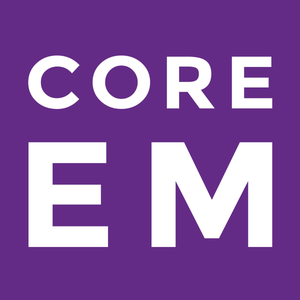 Core EM - Emergency Medicine Podcast
Core EM - Emergency Medicine Podcast
 EM Clerkship
EM Clerkship
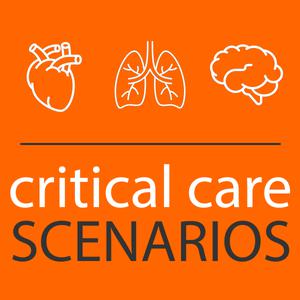 Critical Care Scenarios
Critical Care Scenarios
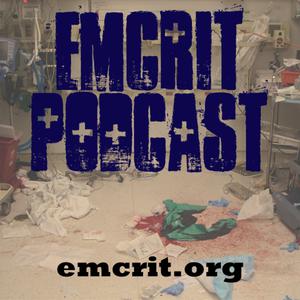 EMCrit FOAM Feed
EMCrit FOAM Feed
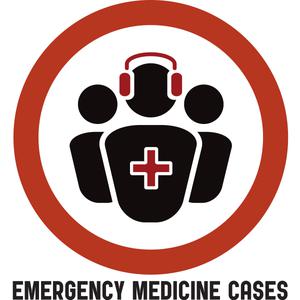 Emergency Medicine Cases
Emergency Medicine Cases
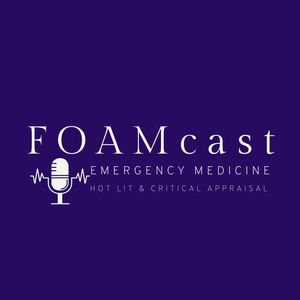 FOAMcast - An Emergency Medicine Podcast
FOAMcast - An Emergency Medicine Podcast